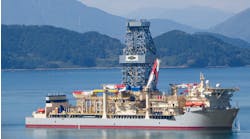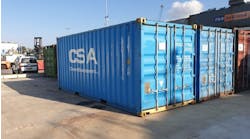Additive manufacturing can help the industry improve component quality
John Bolto
Specialist Advisor
Advisian, a WorleyParsons Group company
For the oil and gas industry, digitalization means much more than automation, artificial intelligence, and cybersecurity. It is the opportunity to re-imagine the design, manufacturing, and operation of assets and technologies, allowing for breakthroughs in safety, efficiency, and performance.
Nowhere is this promise more evident than in additive manufacturing (AM), more commonly known as 3D printing. AM will provide oil and gas companies with the power to transform how oilfield components are created and optimized. The ability to fabricate parts on-demand will render obsolete established and inefficient supply chain models, reducing costs and opening the door for innovation.
The intrigue for AM has been there for years, but traditionally, the industry has always been wary of investing in new, unproven technology. So, what has been the difference in this case? The answer is the proven results that AM has delivered to the aerospace, automotive and medical industries. Companies such as Boeing and Mercedes are printing parts that are lighter, more resilient and primed for performance. These parts are not just prototypes – they are already in widespread use with every necessary technical certification. In Boeing’s case, these parts could cut $3 million from the cost of each 787 Dreamliner jet airliner.
AM can also help resolve one of the oil and gas industry’s more pressing operational dilemmas: supply chain risk. Extreme operating conditions offshore can consume critical parts quickly. Keeping spares on hand can be expensive, with operators often ordering much more than they need. The problem is compounded on ageing assets, where the original manufacturers of critical components may no longer exist, with replacement parts extremely difficult to source.
With AM, companies have the tools to experiment with new materials and designs to create parts – such as valves and casings – that are stronger with a longer life span. Having the means to create custom parts and conduct fast repairs without compromising on quality, strengthens the ability – and the business case – to keep assets operational.
The real opportunity for operational transformation is the ability to create and accelerate the delivery of parts. Instead of relying on manufacturers for back-up, companies can print parts at a more geographically optimal location, take greater ownership, or control, of the supply chain, and lessen the variables that can cause delays. And with the ability to print parts on demand, the need to maintain vast physical inventories disappears. Warehouses become leaner, inventory management is optimized, and costs are reduced further.
Companies in the oil and gas industry are increasingly buying into the idea of AM, but can be overwhelmed with all the possibilities, not knowing where and how to start. However, the initial forays into AM have yielded results, and the knowledge, resources, and expertise built up along the way are helping other companies to determine how AM can fit their operational strategies.
They can look to what their peers or others have achieved to get a feel for what types of parts can be created and what is economically feasible. For example, it may make more economic sense from an operator’s lifecycle cost perspective to print a more complex valve rather than an inexpensive commodity item. LUX Research, an intelligence and advisory firm specializing in emerging technologies, has also identified offshore risers, gas turbine nozzles and pipeline pigs as being ideally suited to AM in the near term.
Cost-benefit analyses and strategic considerations will help focus AM investment on areas that will deliver the best return on investment and the highest operational impact. Additionally, companies will want to examine how and where to physically implement the technology.
But sourcing all the available information and insight can be a daunting task, hence the emergence of new advisory providers that combine the experience and intelligence from early users of the technology with advanced design and strategic expertise. Advisian’s AdditiveNow solution, a joint venture with Aurora Labs, can help an energy firm explore and pursue the possibilities of AM, including design, qualification printing, and one off/short run production printing.
This last element is especially important. Working with a partner that has a deep understanding of printing capabilities enables companies to test out designs without having to commit capex to invest in a machine. And having the opportunity to put designs, concepts, and ideas into practice will help companies develop their AM prowess, while experimenting with new materials and mastering simple fabrication techniques will give operators the confidence to create more complex assets.
There are certain challenges that still need to be addressed such as technical certification and the relatively high cost of printing materials. But widespread adoption is only a matter of time. The potential AM offers to revolutionize how parts are engineered for performance, resiliency, and efficiency will keep the momentum moving forward.
Oil and gas companies have much to gain by starting to craft their AM journey. Unbeknownst to many, they may also have much to lose by delaying it.


